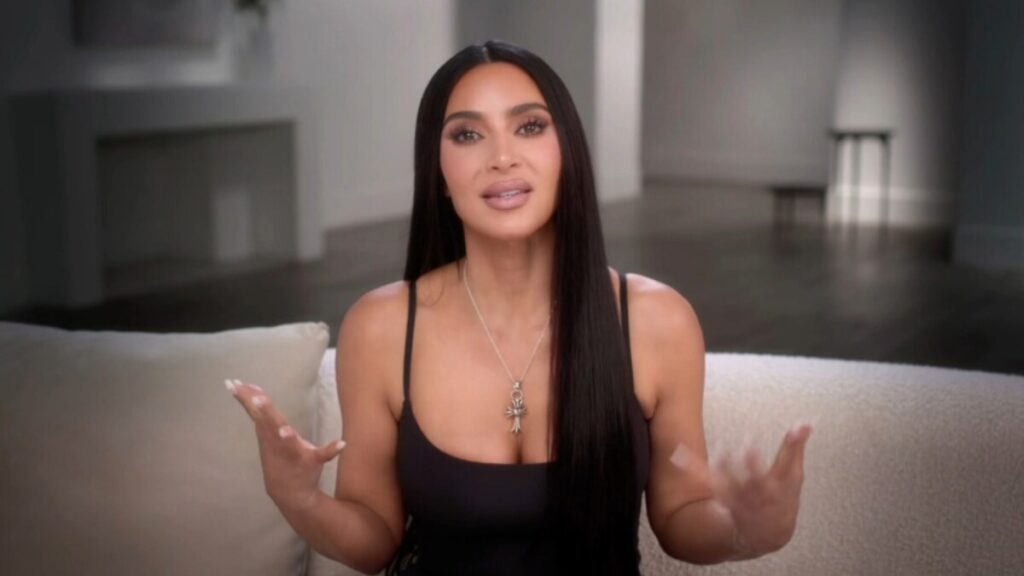The year is 2007. Under the glare of paparazzi bulbs, Kim Kardashian steps out of an L.A. nightclub, the name “Keeping Up with the Kardashians” barely more than a fledgling reality TV experiment. Fast-forward to today, and the same woman is negotiating brand deals worth hundreds of millions, her Kim Kardashian net worth reportedly surpassing the billion-dollar mark. The transformation isn’t just improbable — it’s a case study in celebrity brand strategy that MBA students could dissect for decades.
In a culture quick to dismiss “famous for being famous,” she engineered one of the most remarkable pop cultures in business transitions of the modern era. She didn’t simply ride the wave of attention — she redefined how it could be monetized, scaled, and protected. From beauty empires to billion-dollar shapewear, Kim’s playbook is equal parts cultural instinct, timing, and tactical risk-taking. How did she do it? And, perhaps more importantly, what did she change along the way? The answers reveal a reinvention few saw coming.
Breaking Through the Noise — The Tabloid Era That Defined a Generation
Fame in the Era of Paparazzi and Paris Hilton
In the mid-2000s, fame wasn’t curated through filtered grids and algorithmic feeds — it was chased down Sunset Boulevard, captured in grainy flashes by a swarm of paparazzi. The celebrity gossip economy was booming, fueled by glossy weeklies stacked at supermarket checkouts and gossip blogs refreshing by the minute. Paris Hilton ruled the scene, a platinum-haired socialite turned tabloid queen, and at her side — often literally — was Kim Kardashian, a stylish shadow learning the rhythms of the reality TV fame machine.
It was an era when a well-timed photograph could pay a photographer’s rent and sink or save a public image overnight. Audiences latched onto Kim’s mix of accessibility and aspiration: the designer handbags, the relatable family dynamics, the unapologetic self-promotion. In a media world designed to consume people as quickly as it discovered them, Kim wasn’t just surviving — she was taking notes on how the business of celebrity worked.
Navigating the Criticism Without Disappearing
From the beginning, Kim Kardashian was a lightning rod for the “famous for being famous” critique. Late-night hosts made her a punchline, gossip blogs mocked her every move, and think pieces questioned her cultural worth. Yet, rather than retreat, she leaned in — a masterclass in brand resilience and public persona management.
Strategically timed magazine covers, candid interviews, and an unrelenting presence on her family’s reality show kept her woven into the media narrative. She blurred the lines between scandal and self-promotion, turning controversies — from wardrobe mishaps to unfiltered statements — into headline fuel. By owning the storyline, she denied critics the power to define her.
This wasn’t accidental. Kim understood that in the modern fame economy, absence can be fatal. Staying visible, even in moments of backlash, meant staying relevant — and relevance, in her world, was the currency she could later convert into a billion-dollar brand.
The Pivot Point — Turning Visibility into Viability
For years, Kim Kardashian’s fame had been a spectacle — a constant hum in the background of pop culture. But somewhere between another season of Keeping Up and her first major product lines, the hum became a signal. She stopped treating attention as the endgame and began using it as a lever — the moment she shifted from passive fame to deliberate brand building.
The first signs came in unexpected forms: a wildly successful mobile game (Kim Kardashian: Hollywood) that proved she could monetize her persona in the digital economy; endorsement deals that moved beyond quick paychecks to strategic partnerships with long-term equity; and her earliest product lines, which planted the seeds of her now-refined personal branding strategy.
This wasn’t just influencer monetization. Monetizing fame is about cashing in while the spotlight’s hot; building a brand is about making that spotlight follow you. Kim began aligning every venture with a cohesive identity — aspirational, yet accessible — and a customer base that saw her not just as a celebrity, but as a curator of products they could trust.
By understanding that relevance alone wouldn’t secure her future, she transformed her public image into a sustainable, scalable business engine. The lesson was clear: in the modern economy, visibility is only valuable if it’s built on something that can outlive the headlines.
Building KKW — From Contour Kits to Corporate Valuation
Spotting the Beauty Industry Gap
By the mid-2010s, the beauty market was saturated with legacy brands chasing the same demographics — yet few understood the fast-moving culture of Instagram tutorials and viral trends. Contouring, once a backstage technique used by makeup artists, had exploded into a mainstream obsession thanks in large part to Kim Kardashian’s glam team sharing their process online. While established companies were slow to adapt, Kim recognized the Instagram makeup culture as both a marketing engine and a product blueprint.
KKW Beauty launched in 2017 with a focus on contour kits — not as a niche, but as an accessible staple for everyday consumers. Her celebrity beauty brand strategy married cultural credibility with direct-to-consumer speed, leveraging her existing audience while filling a gap between drugstore basics and pro-grade artistry tools. The result: an instant sellout, proving she wasn’t just following trends — she was setting them.
Scaling Without Overexposure
Kim Kardashian built KKW Beauty’s growth on a principle luxury brands have mastered for decades: make people want what they can’t always have. Instead of flooding shelves, she embraced scarcity drops — limited releases announced with precision timing to spark urgency. Strategic selective collaborations with makeup artists, family members, and even other brands kept the line culturally relevant without diluting its identity.
She also maintained strict control over product lifecycles, retiring items before interest waned and ensuring restocks felt like events, not routine. Even when entering beauty retail partnerships, she resisted overexposure, choosing placements that elevated the brand rather than made it commonplace.
By blending the luxury brand scarcity model with direct-to-consumer agility, Kim kept KKW in the sweet spot: visible enough to maintain desire, elusive enough to feel special. It was a growth strategy designed not just for sales, but for lasting brand equity.
Skims and the Shape of a Billion-Dollar Brand
Why Shapewear Became the Perfect Next Move
By the late 2010s, shapewear was a $2 billion industry hiding in plain sight — functional, but largely uninspired. Traditional brands sold it as a secret to be concealed, not a confidence piece to be celebrated. Kim Kardashian saw the gap. Through her personal style and public image, she had long been associated with body contouring and silhouette enhancement, making shapewear a seamless extension of her celebrity fashion brand.
Her shapewear market analysis revealed two opportunities: inclusivity and design. Consumers wanted more skin-tone options, modern cuts, and pieces that felt as chic as lingerie. Skims answered all three, positioning itself not as corrective wear, but as a style tool for everybody.
The result wasn’t just a product launch — it was a reframing of the category. For Kim, Skims wasn’t a departure from beauty; it was the next logical chapter in selling confidence.
Funding, Valuation, and Scaling Beyond Celebrity
Skims launched in 2019 and wasted no time proving its commercial muscle. Early demand was so intense that multiple collections sold out within minutes, drawing attention not just from consumers but from investors. By 2021, a funding round led by Thrive Capital and Imaginary Ventures valued the company at $1.6 billion, cementing its status as more than a celebrity-driven fad.
Kim Kardashian and co-founder Jens Grede built Skims with scalability in mind — expanding from core shapewear into loungewear, swimwear, and activewear. Global retail expansion followed, with strategic pop-ups in major cities and high-profile collaborations that boosted international awareness without diluting the brand.
By 2023, Skims’ brand valuation growth reached $4 billion, a trajectory fueled by smart inventory control, direct-to-consumer dominance, and selective wholesale partnerships. The brand’s appeal had outgrown Kim’s following, proving the company could stand on its own in the competitive apparel market.
Reinvention as a Long Game — Strategic Moves Beyond Fashion & Beauty
By the late 2010s, Kim Kardashian had mastered the worlds of beauty and fashion — but her most unexpected pivot came in the form of celebrity activism. In 2018, she successfully lobbied the White House for the commutation of Alice Marie Johnson’s life sentence, marking the start of a sustained commitment to prison reform. Far from a one-off headline, Kim began a formal legal apprenticeship, pursuing law studies with the stated goal of passing the California bar.
These moves were more than personal passion projects; they were strategic elements of brand credibility building. Aligning herself with social justice causes reframed her image from reality star to serious advocate, expanding her influence into political and humanitarian circles.

It was a calculated broadening of her brand’s equity. By demonstrating expertise, persistence, and real-world results outside of consumer products, Kim signaled that her value wasn’t limited to trend cycles — it was anchored in cultural relevance that could transcend industries. In doing so, she rewrote the rules for what a 21st-century celebrity entrepreneur could be.
Lessons in Perception Management — Controlling the Narrative
In the early days, Kim Kardashian’s public image was at the mercy of tabloids and paparazzi. Over time, she executed a quiet but decisive shift: moving her story onto platforms she controlled. Instagram, Twitter, and her websites became primary channels for announcements — whether launching a new Skims collection or sharing personal milestones. This direct-to-audience model allowed her to bypass the traditional media filter, a textbook crisis management strategy in the age of constant scrutiny.
When controversies emerged — from cultural appropriation accusations to backlash over ad campaigns — Kim addressed them on her terms, often with measured public statements or strategic silence until the narrative cooled. This media narrative control didn’t just protect her image; it safeguarded her business trajectory. By owning the conversation, she ensured that even difficult moments could be reframed into opportunities for brand engagement rather than reputational decline.
How Kim Stacks Up Against Other Celebrity Entrepreneurs
In the crowded arena of celebrity entrepreneurs, Kim Kardashian stands alongside powerhouses like Rihanna, Kylie Jenner, and Jessica Alba — but her playbook is distinct. Rihanna’s Fenty Beauty disrupted the cosmetics industry with an unprecedented shade range, earning immediate cultural capital and impressive sales, yet her business model leans heavily on her partnership with LVMH. Kylie Jenner built Kylie Cosmetics through hyper-focused influencer marketing and scarcity drops, but its valuation fluctuated sharply after its acquisition by Coty. Jessica Alba’s The Honest Company went public on the promise of clean, family-friendly products, but has faced profitability challenges.
Kim’s approach splits the difference between these models. She pairs Rihanna’s cultural fluency with Kylie’s direct-to-consumer precision, while applying a longevity mindset more in line with Alba’s diversified product portfolio. Crucially, her ventures — from Skims to KKW Beauty — are built with valuation stability in mind, backed by investor confidence and scalable product categories.
In this female founder success story, Kim’s edge lies in building brands that can survive without her constant presence, giving her the rare freedom to evolve without risking the bottom line.
“If You Asked Me in 2007…”
If you asked me in 2007 whether Kim Kardashian would one day be at the helm of a multi-billion-dollar brand portfolio, I probably would’ve laughed — not unkindly, but in the way you laugh at something that feels impossibly far-fetched. Back then, she was a fixture in the paparazzi churn, a supporting player in the Paris Hilton media circus, and the unexpected star of a reality show no one thought would last.
I remember sitting in a newsroom as her name popped up in headline drafts, editors debating whether she was “news” or just noise. But quietly, she was learning — watching how stories were spun, understanding the mechanics of attention.
Somewhere along the way, the punchline became the strategy. She stopped letting the press write the whole script and started dictating the terms herself. Now, watching Skims hit billion-dollar valuations, it’s hard not to marvel at the audacity. She didn’t just change her story; she rewrote the rules for celebrity longevity.
From Cultural Phenomenon to Corporate Force
Kim Kardashian’s evolution from tabloid mainstay to strategic entrepreneur proves that reputation is not fixed — it’s a resource you can reshape with vision, timing, and persistence. She mastered the art of turning visibility into equity, leveraging cultural relevance to build brands with real market value. Her journey shows that personal branding isn’t just about being known; it’s about being known for something that lasts.
For anyone building a business — whether you’re a founder, freelancer, or creative — the lesson is clear: control your narrative, spot the gaps others overlook, and build with the long game in mind. Fame may open the door, but strategy decides whether it stays open.
Kim didn’t just survive the media cycle; she turned it into a business model. And that’s a headline worth keeping.
Nishant Wagh is the founder of The Graval and a seasoned SEO and content strategist with over 15 years of experience. He writes with a focus on digital influence, authority, and long-term search visibility.





5 thoughts on “From Tabloid Headlines to Wall Street Valuations: Kim Kardashian’s Rise and Reinvention”